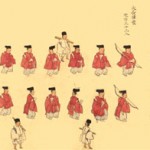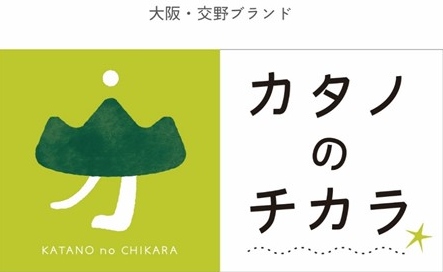From the Nara period to the Heian period, the south of Katano was under the rule of the Moribes, who was designated as patrimonial bureaucrats of Katano Gun (the Katano area). However, in 10th century, the Moribes’ political power became weak with the rise of powerful temples. They built their temples in the Katano area without the Moribes’ permissions. The Moribes, who was afraid of the loss of the political influence, donated their lands to Iwashimizu Hachimangu (the Iwashimizu shrine) in Kyoto and was given political legitimacy.
Since then, people of Katano, as Jinin (assistants of the festival), began to participate in the Iwashimizu festival held in September 15th every year.
This picture shows people in the Mori area are heading to Iwashimizu Hachimangu for Hojyoe (the Iwashimizu annual festival).
Emperors and high-class Nobles frequently visited Katano Gahara for vacation and training through hunting. Some of them connected Ama no Gawa (the Ama no River) with the tale of Tanabata since its scenery was similar to the story. Since then, nobles, who came to Katano on July 7th, were said to enjoy the event.
In the Heian period, the Higashi Koya Kaido (the East Koya Rode) running from Toji in Kyoto to Koyasan Kongobuji in Wakayama was completed. The road was called ‘the rode for faith’ and many monks used it to go to Kyoto or Wakayama. One of them, Kukai, is said to have trained his spirit at Shishikutsu Ji (the Shishikutsu Temple).
Yakushi Nyorai Zazo in Shishikutsu Ji and Jyuichimen Kannon Ritsuzo in Shoden Ji were made in the end of the Heian period. The former is registrated as a National Heirloom.
(left) Yakushi Nyorai Zazo (right) Jyuichimen Kannon Ritsuzo (c) Katano City Education Board
Go on to Chapter 4 Katano in the Kamakura and Muromachi periods


